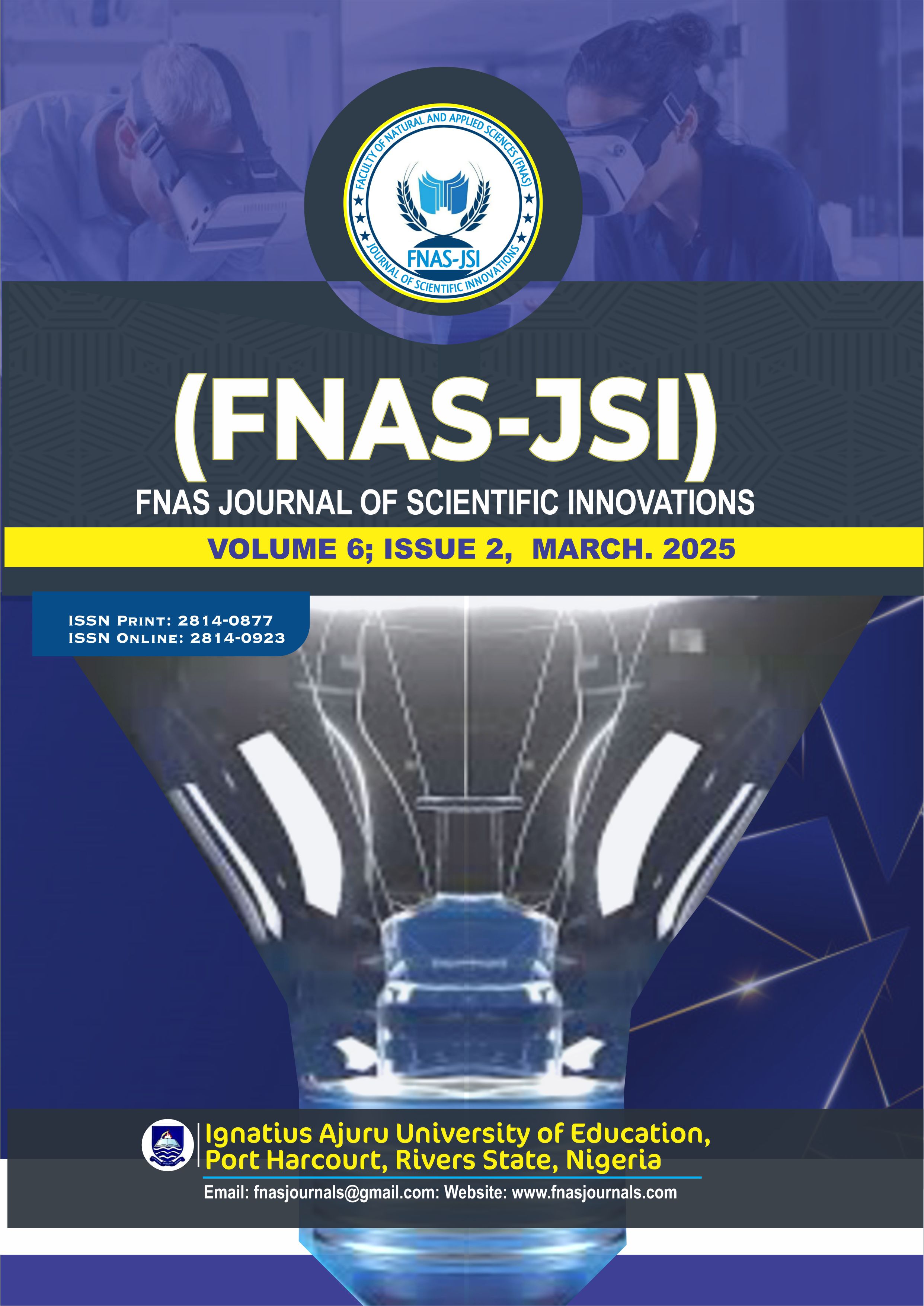Comparative Effect of Commercial and Local made Hair Cream Using Custard apple ( Annona squamosa L ) and Noni ( Morinda citrifolia ) seeds on Malassezia globosa and Malassezia furfur
Main Article Content
Abstract
The study investigates the comparative antifungal effects of a commercially available hair cream and a locally made hair cream using noni (Morinda citrifolia) seed and custard apple (Anonna squamosa L) seed on Malassezia globosa and Malassezia furfur. The antifungal activity was assessed through zone of inhibition tests at varying concentrations (100 mg/ml, 50 mg/ml, 25 mg/ml, and 12.5 mg/ml), with Econazole as control. The results revealed that the commercial hair cream exhibited superior antifungal efficacy, showing inhibition zones of up to 44 mm against Malassezia furfur at the highest concentration, compared to the maximum inhibition zone of 28 mm exhibited by the local hair cream. Additionally, the Minimum Inhibitory Concentration (MIC) and Minimum Fungicidal Concentration (MFC) tests showed that the commercial hair cream had MIC values of 25 mg/ml for Malassezia globosa and 12.5 mg/ml for Malassezia furfur, with MFC values of 50 mg/ml and 25 mg/ml, respectively. These findings indicate that the commercial hair cream is not only more effective in controlling fungal infections but also demonstrates a lower MIC and MFC, further confirming its potency. The study concludes that the local hair cream extracts offers a potent natural alternative for antifungal treatments in hair care products when improved appropriately. It is recommended to use the commercial hair cream for treating fungal scalp infections while improving the locally made hair creams to boost use of agro waste and to produce cost effective hair cosmeceuticals.
Article Details
References
Bajad, M. (2020). Interventions for treating head lice (Review), Cochrane Database of Systematic Reviews, (4), CD001165.
Filatov, V.A., Kulyak, O.Y., & Kalenikova, E. I. (2023), Chemical composition and antimicrobial potential of a plant based substance for the treatment of seborrheic dermatitis, 16(3) 328
Garish, H.V. (2008). Antibacterial activity of some important medicinal plants on human pathogenic bacteria- A comparative analysis: world applied science journal, pg.267-271.
Johnson, K.A. (2019) Feeding strategies and shade type for growing cattle grazing endoplyte- infected tall fescut. Livest Science, 15-25.
Khare, C. (2018). Head lice: Evidence-based guidelines based on the Stafford Report 2008 Update. MeReC Bulletin, 18(5).
Krasteva, D., Ivanov, Y., Chengolova, Z., & Godjevargova, T. (2023). Antimicrobial potential, Antioxidant activity and Phenolic content of Grape seed extracts from four grape varieties, Microogranisms, 11, 395. https//doi.org/10.3390/microorganisms11020395
Kumar, B. (2018). Postharvest physiology and technology of Annona fruits, Food Research International, 44.7.
Narshana, K. (2019). Pediculosis capitis among primary-school children in Mafraq Governorate Jordan. Eastern Mediterranean Health Journal, 18(1), 43-48
Pierre, N. (2017). In vitro antioxidant activity of Anthriscus cerefolium L. (Hoffm.) extracts, Journal of Ethnopharmacology 69.3: 259-265.
Rathi, C. (2018). Antioxidant activity of cauliflower (Brassica oleracea L.), Turkish Journal of Agriculture and Forestry 32.1: 65-78
Smith A. (2017) Antifungal activity of Annona squamosa extracts. Journal of Medicinal plants Research, 11(15), 249-255.

